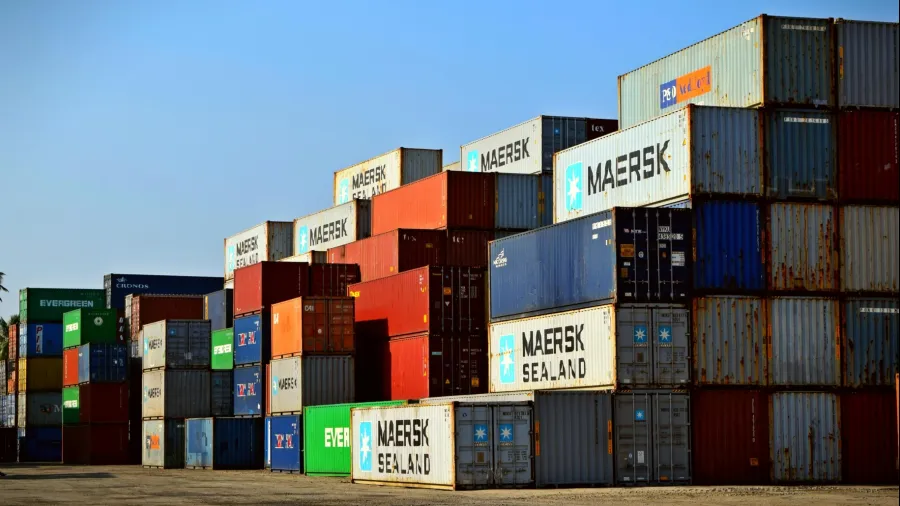
Carriers urged to lock in long-term shipping deals as freight rates slide
Uncertainty in US trade policies has affected cargo flow.
Shipping lines should secure long-term agreements with shippers to maintain profitability as Asia–US sea freight rates continue to decline, according to Norwegian ocean freight rate benchmarking and market intelligence platform Xeneta AS.
“They need to sign long-term agreements with shippers to ensure access to cargo,” Peter Sand, chief analyst at the Oslo-based firm, told Marine & Industrial Report. “Utilisation of individual assets will be key to profitability going forward.”
The average long-term contract rates on the China–US West Coast route fell 40% to $3,300 in August from January, data from Xeneta showed. Short-term rates plunged 68% to $5,793 during the same period.
Sand said the trade environment has been volatile, with uncertainty driven by tariffs imposed by US President Donald Trump that have affected China, the Philippines, Vietnam, and Malaysia.
He added that shippers should take advantage of the market to secure favourable rates and service guarantees, as carriers are likely to become “increasingly desperate” to lock in long-term contracts.
Here’s the rest of the Zoom interview.
What are the key trends for Asia-US sea freight rates?
Ongoing uncertainty around the tariff barriers has kept many shippers on their toes and awake at night because it seems to be—at least in the first and second quarter of the year—that things could change on very short notice, if any notice at all. And that, of course, was really not comfortable for those trying to run a just-in-time supply chain, ensuring that the goods are moving in an even and foreseeable flow for business purposes.
The trade tensions have definitely rolled around, with less demand, lower volumes. And that's also why we see now the short-term market falling from $5,500 in early June to where they are now—below $2,000—because there's a mismatch between demand and supply. Carriers are also preparing for what they normally see as the peak season of the year. But we don't expect a normal peak season to be around in 2025 because the market is much different from what has been going on in 2024 with the Red Sea disruption.
How have these affected shipping companies’ finances and operations?
Carriers at this point remain profitable and also for the full year, they expect to reap solid profit. But they are also seeing the freight rates that they are offering to their shipper customers coming closer and closer every day to their break-even levels.
We have a little bit of a split market in terms of profitability for carriers, between the trade lanes impacted by the Red Sea disruption, where they can still command a premium, and those that are no longer, as the ripple effect that we have seen for more than a year-and-a-half now is petering out. So they're getting back to where they were pre-Red Sea.
I think we're somewhere in between where profits are still reaped, but also where 2026 could bring around very low margins on an overall basis to the carriers.
How will the situation affect rates in the coming months?
It's Important when you look at the current situation in the container shipping market to be aware of the fundamental challenges, and I mean that from a liner perspective. If you look at it from a shippers’ perspective, this is an opportunity, because the deck seems to be stacked right now against the carriers, as they have ordered many new ships that are still getting into their networks.
There's an underlying trend of overcapacity, and that is why I also mentioned the spot rates on the Transpacific down by 68%. We expect those still to be trending down as the underlying pressure is around. You should always expect volatility, whether that is coming about from geopolitics or from shippers all of a sudden finding a need to bring in more goods.
How will this affect shipping companies?
I think they are looking into the toolbox now with smart capacity management. They are treading a thin line between putting too much capacity into the trade lanes, eroding rates further, and then holding back and perhaps arresting a bit of the decline.
Always easier said than done, but the regular tools apply, so a bit of slow steaming, not much to gain on that. But then we need to see also blank sailings picking up again. On top of that, idling of capacity—temporary by nature, but very effective, something that we see very little of these days. But as we move into 2026, we'll definitely see carriers deploy that tool more so, and also, that of a permanent solution—demolishing containers, container ships, because of the fundamental balance.
We still see a fairly bullish approach from any of the carriers, but we also see some of the carriers, mainly the large Chinese groups, facing higher barriers to trade going into the US when the port fees come into play. That will really put pressure on Chinese operators and those who also put Chinese-built ships in North America.
How long do you expect this downtrend in freight rates to last?
As long as it takes for rates to come back to pre-Red sea levels, and how long will that take? Well, some of the trade lanes were there already, like the Transpacific spot, whereas we are still elevated on some of the other trade lanes. But for the long-term contracts, we're seeing that decline coming into force.

















 Advertise
Advertise








